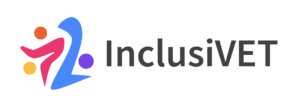Chapter 3 – Continuous Monitoring and Improvement: The PDCA Cycle
The PDCA (Plan-Do-Check-Act) cycle provides a structured framework for monitoring and continuous improvement. It is particularly relevant when implementing an action plan for inclusive learner engagement, as it ensures that every phase of the implementation is scrutinised and adjusted as needed. By applying this approach, VET institutions can not only enhance the effectiveness of their inclusive engagement initiatives but also embed adaptability and responsiveness into their organisational practices.
Key elements include:
- Plan: During this stage, institutions must define clear, inclusive objectives that align with the action plan’s goals. These objectives should be specific, measurable, achievable, relevant, and time-bound (SMART). Detailed action plans should be developed, outlining the steps required to achieve these objectives, assigning responsibilities, and identifying necessary resources. Consideration should also be given to potential risks and mitigation strategies.
- Do: Actions planned in the previous stage should be implemented on a small scale or as a pilot project. This allows institutions to test the feasibility and effectiveness of the planned actions in a controlled environment. Pilot implementations can provide valuable insights into potential challenges and resource requirements before scaling up.
- Check: Outcomes from the implementation should be analysed and evaluated against pre-defined key performance indicators (KPIs) and objectives. This phase involves collecting qualitative and quantitative data to assess progress, identify successes, and pinpoint areas where the plan may be falling short. Feedback from staff and learners should be actively sought to ensure the evaluation is comprehensive and inclusive.
- Act: Based on the analysis conducted during the check phase, institutions should take corrective actions to address any gaps or challenges. Successful actions should be standardised and incorporated into routine practices. If necessary, the cycle can be repeated to further refine and improve the implementation process. Continuous feedback loops ensure that changes are responsive and aligned with learners’ needs.
